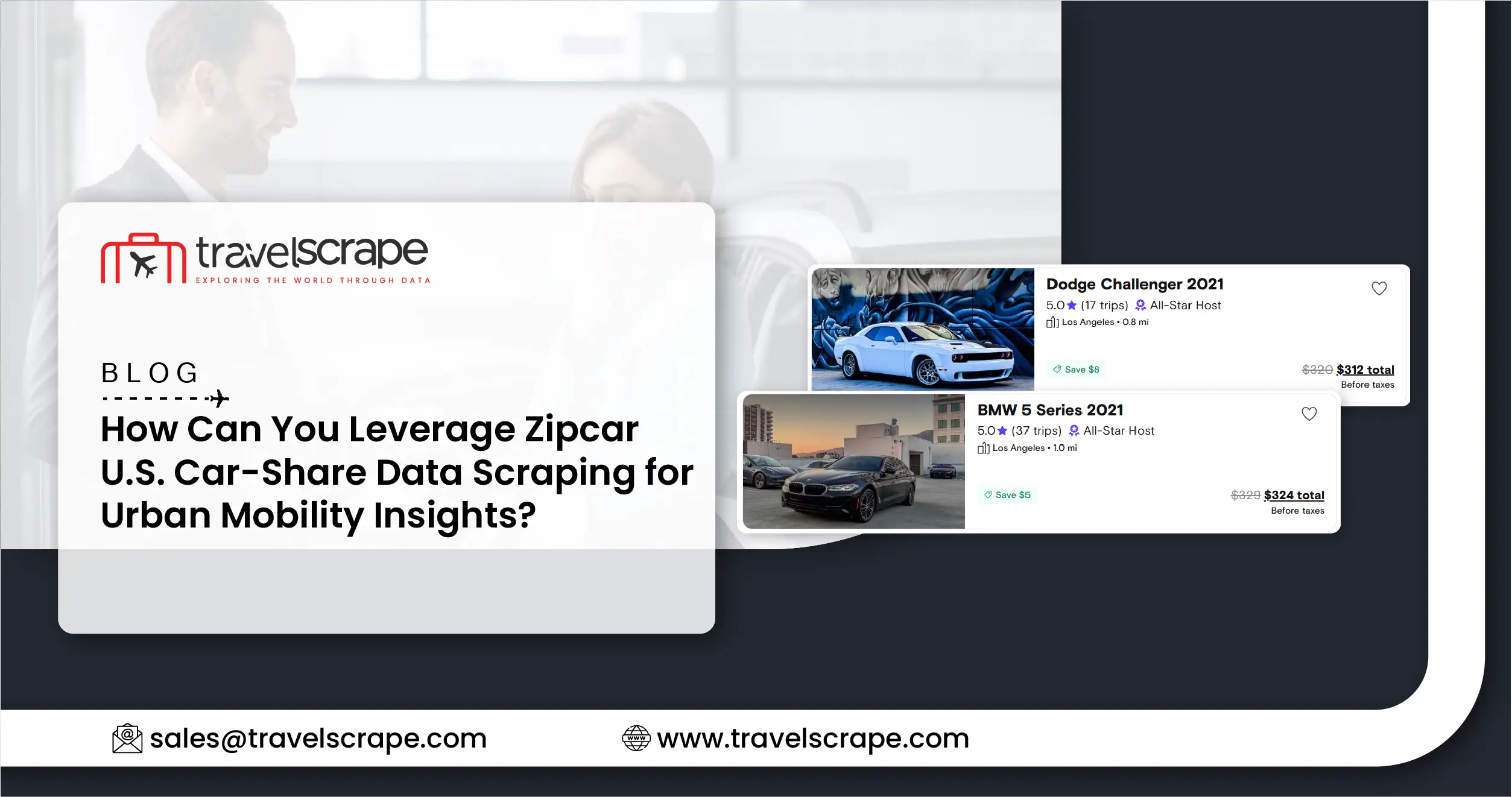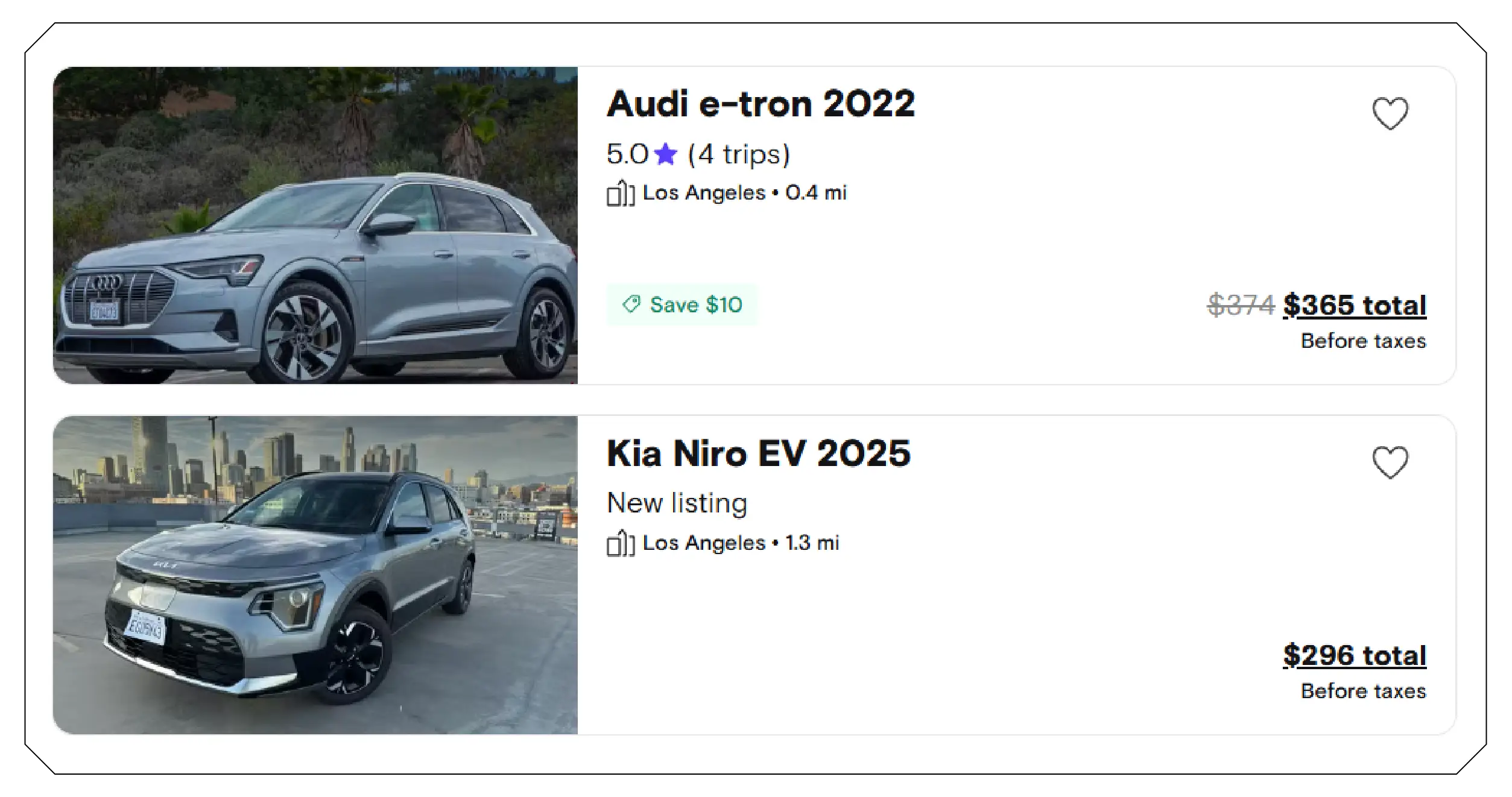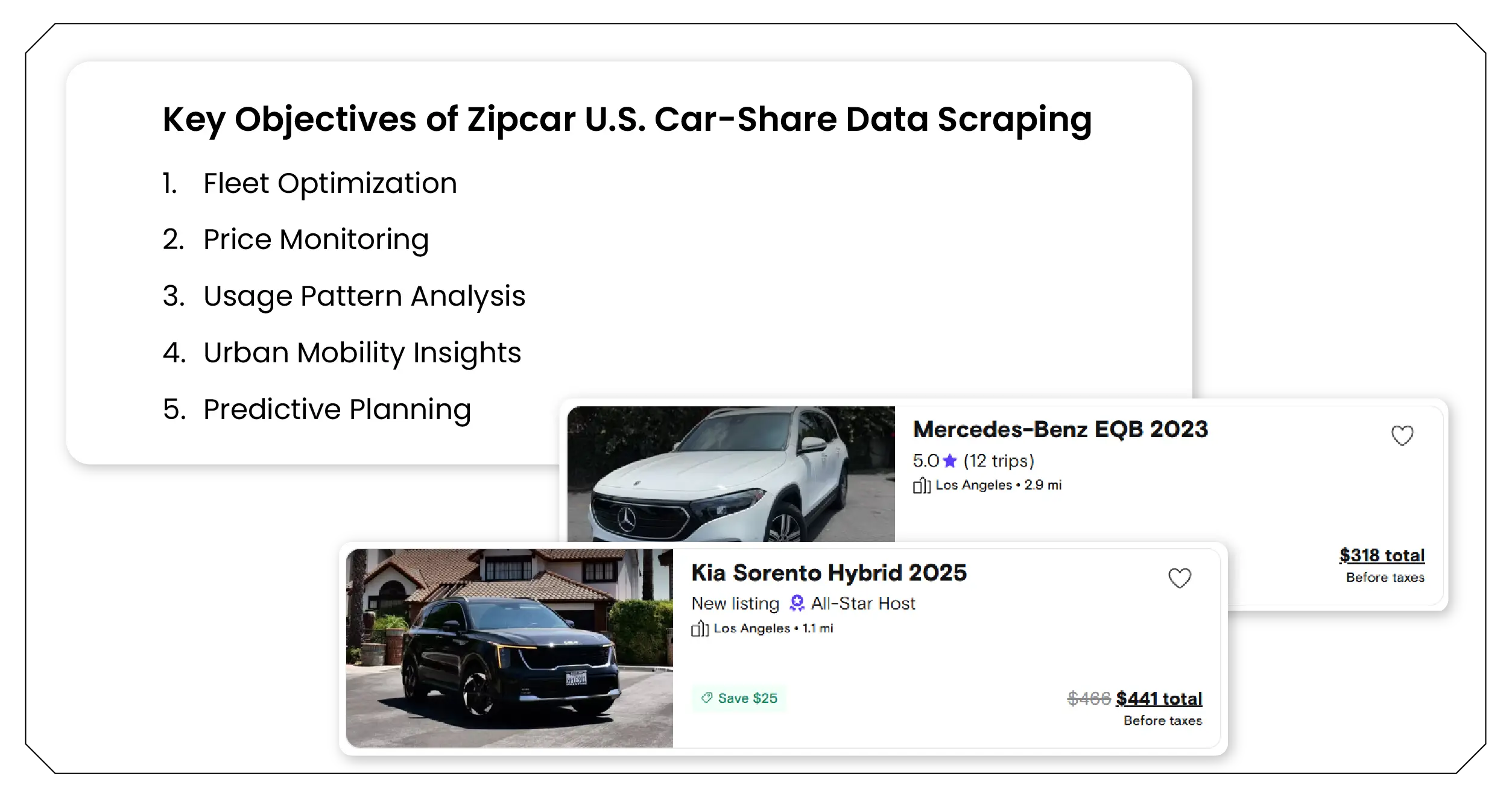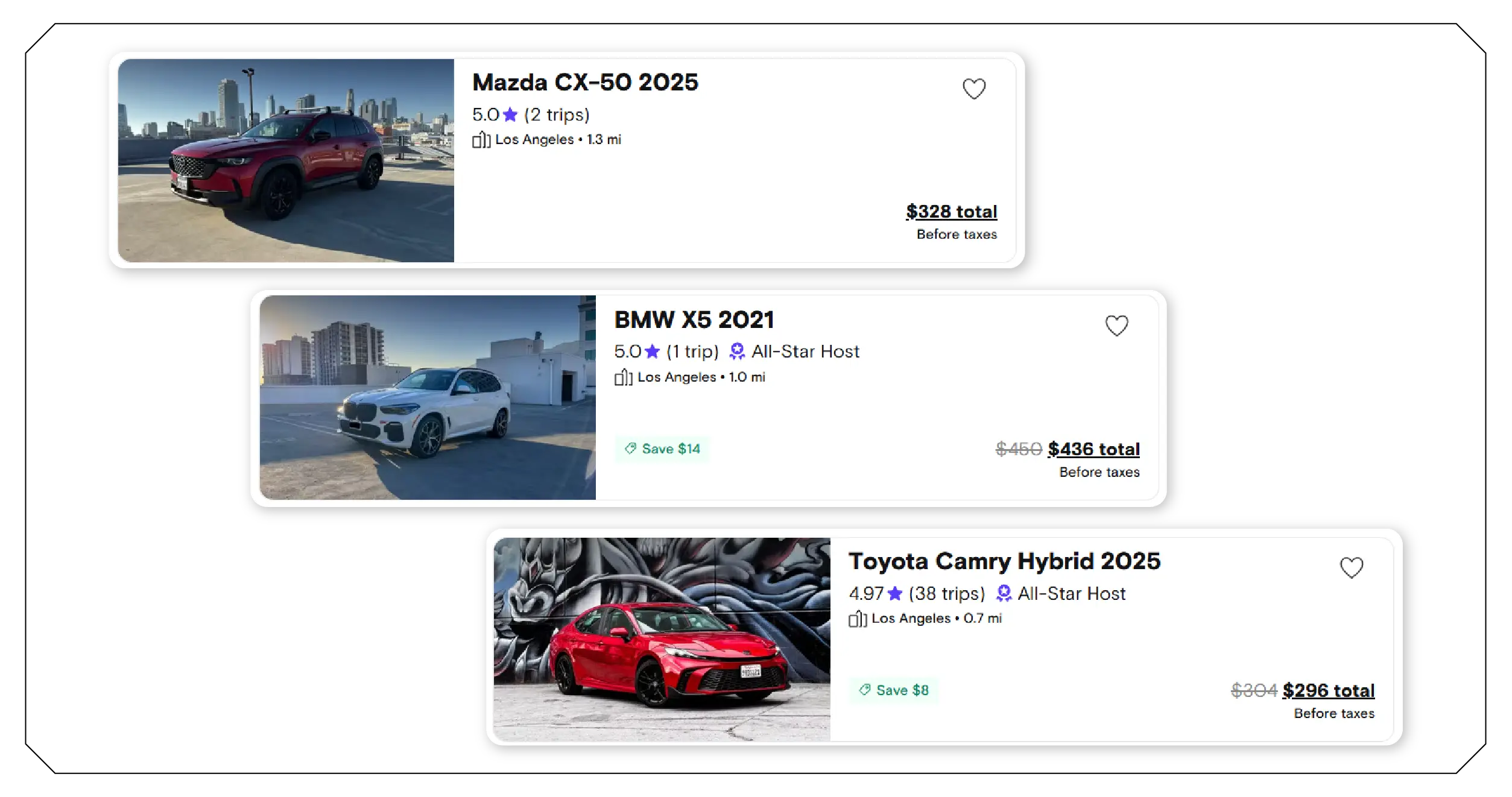How Can You Leverage Zipcar U.S. Car-Share Data Scraping for Urban Mobility Insights?

Introduction
The car-sharing market in the U.S. has grown exponentially, driven by urbanization, environmental consciousness, and a shift in mobility preferences. Platforms like Zipcar have become integral to city transportation, offering flexible car access without ownership. For data analysts, transportation planners, and mobility-focused companies, understanding usage patterns, pricing, and station inventory is critical. Leveraging Zipcar U.S. car-share data scraping enables stakeholders to systematically collect, analyze, and visualize this information. By integrating data such as the Zipcar.com Car Rental Prices Dataset with station-level availability, organizations can monitor trends, optimize fleet allocation, and enhance urban mobility strategies. Additionally, the ability to scrape Zipcar U.S. car-share station inventory provides a granular view of vehicle distribution, turnover, and high-demand locations, forming the basis for actionable insights in the evolving shared mobility landscape.
Why Zipcar Data Matters?

Zipcar has revolutionized urban transportation by providing on-demand vehicles through an easy-to-use app and website. The platform serves cities nationwide, offering a mix of sedans, SUVs, and electric vehicles across diverse neighborhoods. For researchers and operators, Zipcar represents a rich data source on mobility behavior, demand fluctuations, and pricing strategies. Collecting and analyzing such information allows stakeholders to:
- Identify high-demand areas Optimize vehicle placement to meet urban mobility needs.
- Understand temporal usage patterns Gain insights for effective fleet management.
- Monitor pricing strategies Evaluate their effects on utilization and revenue.
- Detect emerging trends Track adoption of urban mobility and car-sharing behavior.
By leveraging Zipcar turnover rate analysis, analysts can pinpoint how frequently vehicles are rented and returned, offering crucial insights into station performance, peak usage hours, and potential gaps in service.
Methodologies for Scraping Zipcar U.S. Data
1. Defining Data Objectives
Before collecting Zipcar data, it’s essential to define objectives. Analysts typically target:
- Station locations and inventory counts
- Vehicle types and availability
- Rental prices per hour or day
- Frequency of bookings and returns
- Peak demand periods and turnover rates
A clearly defined goal ensures the collected data is relevant for generating insights. Integrating this data with the Car Rental Data Intelligence framework further allows cities and operators to enhance service efficiency and passenger satisfaction.
2. Choosing the Right Scraping Tools
Scraping Zipcar data requires handling dynamic web content and API calls. Common tools include:
- Python Libraries: BeautifulSoup for HTML parsing and Selenium for navigating interactive pages.
- Scrapy Framework: Ideal for large-scale scraping with scheduling and pipeline support.
- API Integration: Where available, APIs allow structured access to availability, pricing, and station data.
This approach facilitates building a comprehensive Zipcar.com Car Rental Prices Dataset, capturing real-time rates across locations and vehicle types.
3. Data Cleaning and Structuring
Raw scraped data often contains inconsistencies, missing entries, or irregular formats. Cleaning steps include:
- Removing HTML tags and special characters
- Normalizing price formats
- Standardizing station identifiers and vehicle types
- Handling missing availability or booking records
Once cleaned, data becomes suitable for advanced analytics and integration with urban mobility planning tools, allowing detailed analysis of urban car-share trends with Zipcar U.S. data.
Key Objectives of Zipcar U.S. Car-Share Data Scraping

Scraping Zipcar data enables organizations to achieve multiple strategic objectives:
- Fleet Optimization: Understanding station inventory and turnover rates helps operators allocate vehicles efficiently.
- Price Monitoring: Collecting real-time rental pricing supports competitive pricing strategies and market analysis.
- Usage Pattern Analysis: Tracking peak hours and high-demand locations helps in capacity planning.
- Urban Mobility Insights: Integration of booking and availability data aids city planners in enhancing transportation infrastructure.
- Predictive Planning: Historical rental trends can inform predictive models for fleet expansion or redistribution.
Through Car Rental Price Analytics , businesses can quantify the impact of pricing changes on demand, enabling dynamic pricing strategies that maximize utilization and revenue.
Constructing a Zipcar U.S. Car-Share Dataset

A well-structured dataset is crucial for analysis. A typical Rental Car Data Scraping dataset might include:
| Station Name | City | Zip Code | Vehicle Type | Hourly Rate | Daily Rate | Availability | Turnover Rate | Peak Hours | Bookings |
This structured approach allows stakeholders to monitor:
- Vehicle availability per station
- Turnover rates and utilization levels
- Price fluctuations across different cities
- Temporal trends in car-share demand
When enriched with demographic or traffic data, analysts can identify patterns in commuter behavior, preferred vehicle types, and station performance.
Real-World Applications of Zipcar Data
- Optimizing Fleet Allocation:
By analyzing vehicle availability and turnover, operators can ensure that high-demand stations are sufficiently stocked while avoiding over-saturation at low-usage locations. This results in improved user satisfaction and operational efficiency. - Pricing Strategy Enhancement:
With detailed insights from the Zipcar.com Car Rental Prices Dataset , companies can identify which locations respond best to pricing adjustments, helping implement flexible or surge pricing strategies. - Urban Mobility Planning:
City planners can leverage scraping Zipcar U.S. car-share data for city mobility intelligence to identify areas underserved by car-share services. This supports sustainable transport planning, reduces traffic congestion, and improves accessibility. - Trend Analysis:
Continuous collection of Zipcar data allows analysts to identify patterns such as weekend surges, seasonal fluctuations, or shifts in vehicle preference. These trends inform marketing campaigns, promotions, and fleet strategy. - Predictive Maintenance and Operations:
Monitoring vehicle usage frequency and turnover helps operators anticipate maintenance needs, reduce downtime, and optimize operational logistics.
Advanced Analytics with Zipcar U.S. Data
Once data is collected and cleaned, various analytics approaches can be applied:
- Turnover Rate Analysis: Evaluating how often vehicles are rented and returned, highlighting high-performing stations.
- Availability Heatmaps: Visualizing stations with high or low vehicle availability to guide fleet redistribution.
- Price Elasticity Modeling: Understanding how changes in pricing impact demand across different cities or times.
- Usage Segmentation: Categorizing users based on booking patterns, trip duration, and vehicle type preference.
- Predictive Forecasting: Anticipating future demand trends for strategic fleet planning.
By applying these techniques, stakeholders can gain a holistic view of urban car-sharing dynamics and make evidence-based operational and strategic decisions.
Challenges in Scraping Zipcar Data
While scraping provides immense value, there are several challenges:
- Dynamic Web Content: Zipcar’s website and app content is often dynamically loaded, requiring specialized tools to extract data accurately.
- Anti-Scraping Measures: Captchas, rate limits, and IP restrictions can impede automated data collection. Rotating proxies and ethical scraping practices are essential.
- Data Privacy Compliance: While public data can be scraped, analysts must ensure user privacy is respected and legal regulations are followed.
- Data Volume and Storage: Large-scale scraping generates significant data that requires proper storage, management, and processing infrastructure.
- Data Accuracy: Real-time availability and pricing can fluctuate rapidly, necessitating frequent updates to maintain dataset relevance.
Addressing these challenges ensures reliable and actionable insights from analyzing urban car-share trends with Zipcar U.S. data.
Integration with City Mobility and Transportation Data
Combining Zipcar data with urban datasets—such as traffic density, population demographics, and public transit accessibility—provides deeper insights into city mobility. Analysts can evaluate:
- Areas where car-share services complement public transportation
- High-demand zones are underserved by private or public vehicles
- Potential locations for new Zipcar stations
- Impact of pricing strategies on usage across neighborhoods
This integration strengthens urban planning initiatives and supports sustainable transport solutions while maximizing fleet utilization.
Future Applications and Opportunities

The insights derived from Zipcar data scraping open multiple opportunities:
- Expansion Strategy: Identifying cities or neighborhoods with high adoption potential.
- Sustainability Initiatives: Encouraging electric or hybrid vehicle usage based on demand patterns.
- Personalized Marketing: Targeting users with promotions based on travel behavior and preferences.
- Intermodal Integration: Combining car-share data with bike-share, scooter-share, or public transit data for multi-modal mobility solutions.
By leveraginga Car Rental Data Intelligence , stakeholders can make informed decisions that benefit both operators and urban commuters.
How Travel Scrape Can Help You?
- Comprehensive Review and Availability Collection: We gather detailed information on car availability, vehicle types, rental durations, and pricing.
- Station and Fleet Insights: We extract data on rental locations, fleet distribution, and station performance to identify high-demand areas.
- Real-Time Monitoring: Our solutions enable continuous tracking of bookings and availability, ensuring up-to-date insights for operational decisions.
- Data Cleaning and Structuring: We transform raw data into organized, analysis-ready formats suitable for reporting, analytics, and predictive modeling.
- Actionable Analytics Support: We provide insights on pricing trends, fleet utilization, and booking patterns to optimize operations and enhance user experience.
Conclusion
Scraping Zipcar U.S. car-share data provides actionable intelligence on vehicle availability, station performance, rental pricing, and urban mobility trends. Combining these insights with historical and real-time data supports strategic decision-making, operational efficiency, and optimized city transport solutions. Through car-share station inventory and turnover rate analysis, businesses can enhance fleet allocation, reduce downtime, and increase user satisfaction. Coupled with Real-Time Travel App Data Scraping Services , stakeholders can maintain an up-to-date view of the market. Finally, leveraging the scraping of car-share bookings and availability empowers operators and planners to understand demand, anticipate trends, and drive smarter urban mobility solutions.
Ready to elevate your travel business with cutting-edge data insights? Get in touch with Travel Scrape today to explore how our end-to-end data solutions can uncover new revenue streams, enhance your offerings, and strengthen your competitive edge in the travel market.